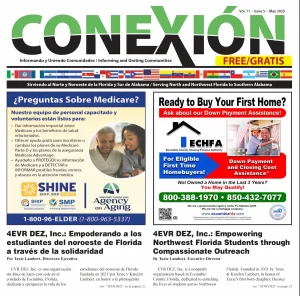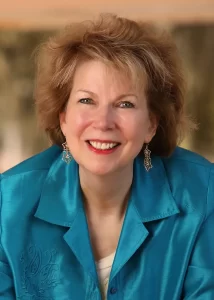HINDSIGHT IS 2020
By Deborah DeSilets
Growing up in Florida, my ears as a child were filled with the lament of my elders that, “Hindsight is 2020”. This News Year—with its resounding 2020, I realize how true this is.
Each January my professional organization, the American Institute of Architects (AIA), hosts a Legislative Day that allows members—both students and professionals alike—to look at issues involving the profession that year in the legislature. This year we have several asks: we know that we need professional regulation; we know we need intense continuing education and a better understanding of construction in our climate. On January 28th, we gathered and shared insights as we look seriously at current Florida House and Senate bills that deregulate, limit and reduce the importance and understanding architecture. We are more than aware—through painful hindsight—that as more homes are being built, more aberrant climate expected, and the rising sea levels assured—that sheltering people from storms and rebuilding communities requires a leader. Architects take that challenge seriously.
The coastline of Florida and America’s Gulf West has faced many devastating environmental challenges since 1992- 2018—some of the most destructive hurricanes in the past 30 years. Responding to this; the year’s AIA theme is “Craft, Culture and Community”—what I will add to this is Climate Change Crisis. The five worst hurricanes—in hindsight—have been at great expense to people and the places people live. Further to the six mantra words, I would add an “ABC: architects build community after devastations. Architects repair reconfigured cites, redefine construction practices and remind communities of what they are made of—people. And in Florida where 70% of our people live and make homes on our 1200 miles of exposed beachfront, the mantra of the “craft, culture, and community” comes on the lessons learned by high force winds.
Now, as the people of Florida experience more Climate Change Crisis—this will be a topic that all Floridians can discuss— there must be a leader for this effort. And architects take that challenge. To wit, ninety percent of our lives are spent in buildings—we are born in a hospital, educated in schools, receive pray in churches, and are presented at death in a funeral home. Throughout our lives we are shaped by the spaces we live in; by our architecture and the places in-between buildings—we see our friends as they cross a street, we stroll to the library on a park lawn, we erect meaningful community monuments and use signs to direct others. In short, people acclimate to a built environment and become one with it. Indeed, we all become disoriented when places are changed catastrophically. The AIA Legislative Day Poster portrays a simple idea: the little house that stood on Mexico Beach. This was due to our change in building codes after Hurricane Andrew. It demonstrates the need for architects and strong building codes—and the need for continuing education, and the need for a regulated profession.
This is a year to recap and see just how much Hindsight is 2020:
“Hurricane Andrew about 250,000 people were left homeless; Dade County Florida’s building codes were substantially overhauled after Andrew, and now there is a uniform set of codes across the state. These codes stipulate that all new structures undergo tougher inspections and be built with shatterproof glass and straps to reinforce the connection between roof and walls.”
“Hurricane Katrina struck the Gulf Coast of the United States early in the morning on August 29, 2005. Hurricane Katrina affected over 15 million people in different ways; an estimated 80% of New Orleans was underwater, up to 20 ft deep in places.” They are still rebuilding the community after the storm.
“August 30-September 14, 2017, there were 4 million people evacuating Florida as Irma became the fifth-costliest hurricane in history, causing nearly $65 billion in damage. The word Irmageddon was coined soon after the hurricane to describe the damage caused by the hurricane.” The movement of people exposed the need for more roads for evacuating the state.
“Hurricane Michael on Wednesday, October 10, 2018, made landfall along the Florida Panhandle and is the strongest hurricane to hit the continental US since Andrew. It is estimated that 325,000 people in the storm’s path were told to evacuate by local authorities.” The total loss of community has been tragic.
And to add to this is the conversations ongoing from Puerto Rico, “where AIA members explain the critical role of resilience in order for communities to withstand the impacts of natural disasters.”
So, in hindsight let us look to the future and in an effort to better understand the evolving world around us go to the www.aiaflorida.org and learn about the bill’s architects are affected by—be better-informed clients.



